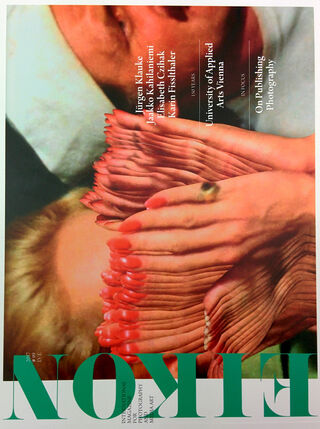
Magazine, German, Thread Stitching, 92 Pages, 2018
Eikon #103 International Magazine for Photography and Media Art
availability unknown, if interested please write an email
In the age of the omnipresent moving image—from YouTube tutorials circulating online and animated GIFs to homemade video clips, all of which, thanks to user-friendly software, are easy enough to produce for any teenager with a smartphone—there is something anachronistic about the examination of a classic genre like the still life.
And yet it might just be our oversaturation with these viral moving images that has sparked the yearning of a younger generation of artists for this traditional genre, perhaps precisely because it is static, non-variable, and therefore somehow final in its appearance. It is possibly also its decelerated creative process that animates artists to endeavor this step back, for what is arranged in front of the camera’s lens is patient, at least compared to some other protagonists in human form. Add to this that it is “surely no coincidence that the still life is now once again arriving more frequently on the stage of visual consideration, for our visual cultures are in a state of upheaval and photographic images are beginning to replace language” (cf. 56).
A tradition that established itself 400 years ago is back in demand today, especially in photography, despite vigorous competition from media harboring far more possibilities. This observation was the starting point for the current exhibition at Kunst Haus Wien, Still Life. Obstinacy of Things (September 13, 2018 through February 17, 2019). In the “Focus” section of our current issue, the show’s curator, Maren Lübkke-Tidow, shares her thoughts about why this genre has recently experienced its photographic renaissance, emphasizing the range of negotiated research fields and findings using an exemplary selection of contemporary positions.“For with the still life, the viewing tempo decelerates: its pictorial spaces allow presence to unfold,” the author concludes. We therefore wish you, dear readers, sufficient leisure to experience the compositions in their multitude of meanings. Nela Eggenbergerfor EIKON, September 2018 Sprache: DEutsch und English


